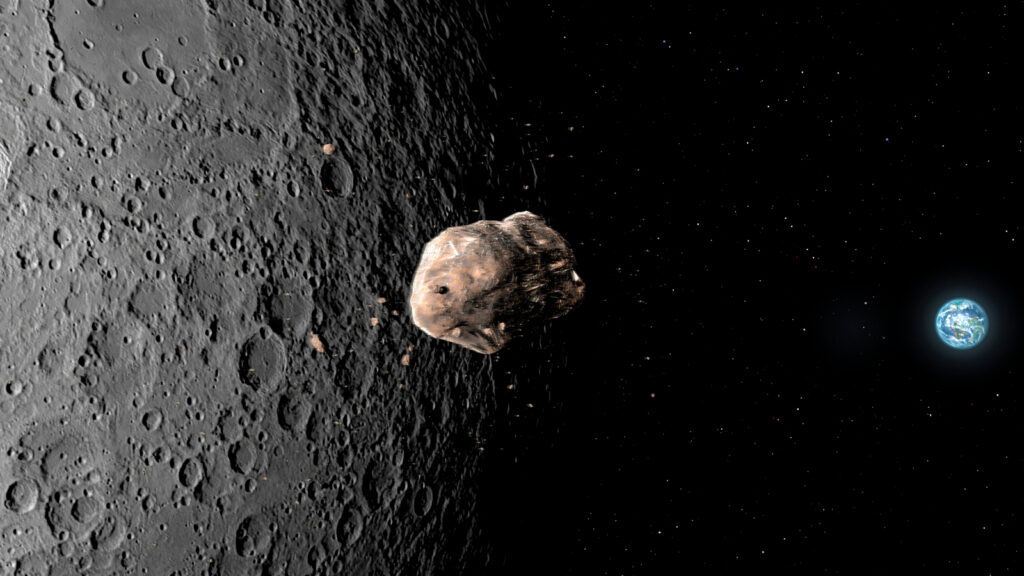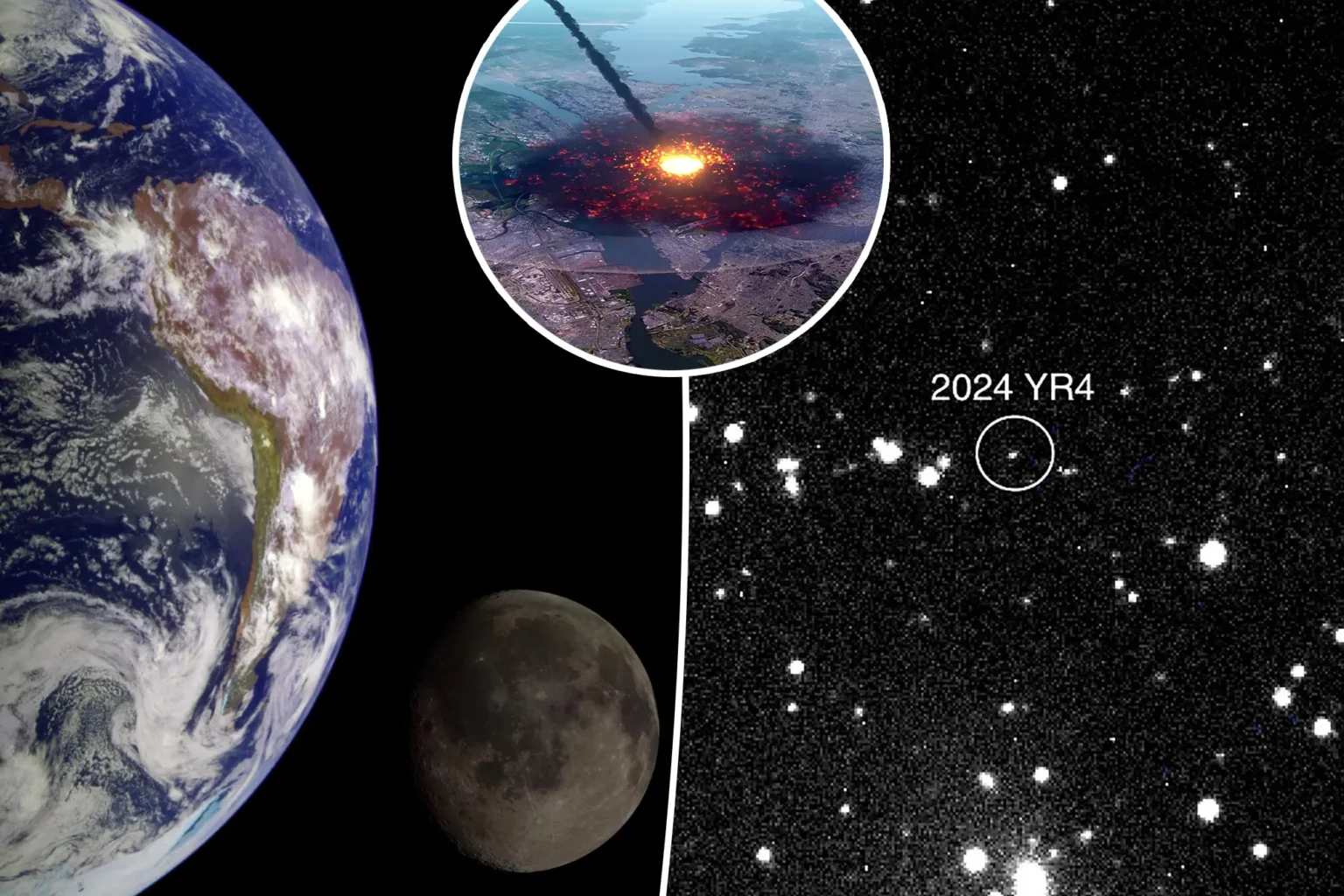Asteroid 2024 YR4, once known for having the highest recorded impact risk to Earth, has recently gained attention again due to a minor rise in the chances of it hitting the Moon in 2032. While initially feared for its potential Earth impact, updated observations now indicate the risk to our planet is extremely low.
The asteroid, which measures between 53 and 67 meters (about 174 to 220 feet) — roughly the height of a 10-story building — was first spotted on December 27 last year. Early predictions had raised concerns, showing an impact probability peaking at 3.1%, the highest for any large asteroid. The potential impact zone spanned across the eastern Pacific, northern South America, Africa, and southern Asia. Scientists warned that if it entered Earth’s atmosphere over the ocean, a tsunami was unlikely; however, an airburst over a populated city could cause minor damage like shattered windows.
Recent efforts led by Andy Rivkin and his team at the Johns Hopkins Applied Physics Laboratory used data from the James Webb Space Telescope’s Near-Infrared Camera to refine the asteroid’s trajectory for December 22, 2032. This improved analysis enhanced prediction accuracy by nearly 20%, leading to an updated assessment of the asteroid’s path.

According to NASA, the probability of asteroid 2024 YR4 impacting the Moon has increased slightly from 3.8% to 4.3%. Despite this, the space agency assures that even if a collision occurs, it will not affect the Moon’s orbit or pose any danger to Earth.
Astronomer Pawan Kumar, formerly of the Indian Institute of Astrophysics, emphasized that a lunar collision is not a cause for alarm. Any debris from such an impact would likely burn up in Earth’s atmosphere before reaching the surface, posing no threat to our planet.
As more orbital data became available, the chance of an Earth impact significantly decreased. By mid-February, NASA’s risk assessment dropped from 1.5% to just 0.3%. On February 24, NASA officially declared an “all clear,” confirming the asteroid will safely pass Earth in 2032 with a negligible 0.004% chance of impact.
Currently, 2024 YR4 is too distant to be observed from Earth, but the JWST’s brief May observations have proven vital in refining its projected path. NASA continues to monitor such near-Earth objects closely to ensure timely and accurate risk assessments.
In summary, while asteroid 2024 YR4 remains a subject of scientific interest due to its size and trajectory, there is no imminent threat to Earth. The increased possibility of a lunar impact in 2032 is being watched but is not considered hazardous. This ongoing vigilance highlights the importance of advanced telescopes and international collaboration in planetary defense efforts.




